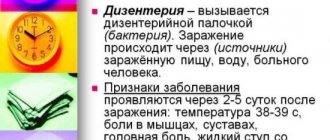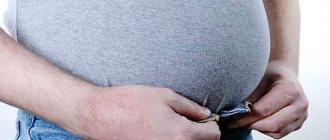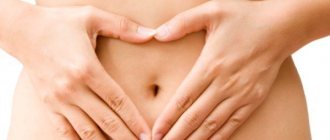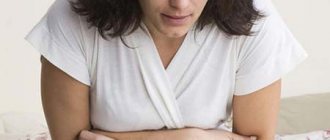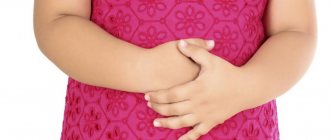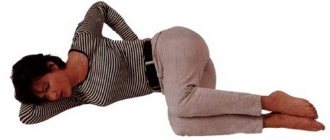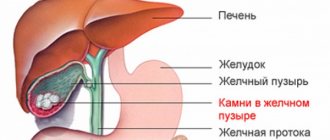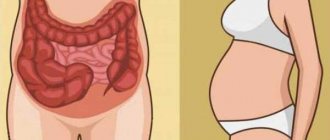The final stage of digestion and absorption of nutrients occurs in the intestines. This organ is in constant motion, which allows the waste masses to move towards the anus.
The act of defecation is a natural process of removing everything unnecessary from the body. It should not be accompanied by pain or other unpleasant symptoms.
If the lower abdomen hurts after defecation, you need to find out the cause of what is happening, and also eliminate it as quickly as possible.
Causes
At the moment of defecation, a spasm of smooth muscles occurs, allowing the feces to be expelled. In the case of stagnant processes or inflammation, this process can be painful. The most common reasons for discomfort and pain after visiting the toilet in a big way are:
prolonged sitting on a hard surface, which provokes metabolic disorders in the lower intestine; inflammation of the genitourinary system; anal fissures, which serve as an open door for various viruses and bacteria that can provoke an inflammatory process; sedentary lifestyle and obesity; unhealthy diet consisting of rough food; lack of water in the body, which complicates the process of digestion and absorption of food; lack of physical activity, as a result of which smooth muscles lose their tone.
However, this is not the entire list.
Some diseases that occur in a chronic form can also contribute to the appearance of pain after defecation in the lower abdominal segment. Let's look at these reasons in more detail.
Pain when passing stool due to anal inflammation
Proctitis, or inflammation of the mucous membrane of the rectum and sigmoid colon, is another possible cause of pain during bowel movements. In addition to anal pain symptoms during bowel movements, patients complain of constantly irritating itching in the anus, blood in the stool, the inability to sit in one place for a long time, as well as a feeling of incomplete bowel movement after defecation.
Other warning symptoms for anal inflammation:
- very dark, black stools, indicating blood coming from the upper gastrointestinal tract;
- the presence of fat, mucus in the stool;
- fecal incontinence;
- due to suggestive narrowing in the final part of the colon, pencil-type feces are formed;
- A palpable swelling or thickening around the anus may indicate an abscess or cancerous lesion.
Any of the above symptomatic signs should cause concern and be a reason to consult a doctor.
A healthy diet relieves intestinal inflammation and pain during bowel movements
The most common diseases
This category includes inflammatory processes, as well as neoplasms that provoke painful sensations during intestinal spasms.
They can be supplemented by other symptoms, so it is worth monitoring their frequency and nature, preventing the situation from worsening.
Appendicitis
This disease is marked by the presence of an inflammatory process in the vermiform appendix of the cecum. Appendicitis most often occurs in people suffering from constant constipation due to impaired intestinal motility. This disease is very insidious because for a long time it can masquerade as other pathologies without revealing itself. But at one fine moment, when the inflammatory process reaches its climax, the appendix, at the slightest movement of a person, can rupture, and all its contents spread throughout the abdominal organs. This condition is extremely dangerous because it provokes an extensive inflammatory process, the treatment of which will become more complicated.
The initial stages of appendicitis may be accompanied by acute and cramping pain that occurs after bowel movement. The mechanism for increasing pain is simple: the intestines contract, and the impulse is transmitted through the nerve cells, reaching the appendix.
The presence of inflammation provokes severe pain, which can subside on its own after the spasm is relieved.
The pain is localized in the area below the navel on the right side. May be accompanied by additional symptoms, including:
nausea; severe diarrhea; spasm of the entire abdominal area, hindering movement; blood impurities in stool; fever and chills.
If such symptoms appear, you should seek help from a specialist, even if the pain goes away on its own after some time. As a diagnosis, blood, urine and feces are examined for the presence of an inflammatory process, the painful area is palpated, and internal organs are also examined using ultrasound.
Treatment of appendicitis (even if it is not acute) is surgical.
Resection of the appendix eliminates localized inflammation and also prevents its spread to other organs.
Inflammation of the intestinal mucosa
This disease has a collective nature, since it includes several causes that provoked the inflammatory process:
Helminth infestation - parasites that enter the body from the outside, settle on the intestinal mucosa, violating its integrity, and also releasing a large amount of toxins. Infections caused by E. coli, viruses, salmonella. Dysbiosis caused by an imbalance between “good” and “bad” bacteria. Lack of normal nutrition, which is dominated by fatty and fried foods without vegetables, fruits and dairy products. Atherosclerosis of intestinal vessels, in which its normal peristalsis is disrupted. Crohn's disease and other autoimmune diseases in which the body actively produces antibodies to its own cells of the intestinal mucosa, perceiving them as foreign.
All these factors provoke degenerative processes in the mucous membrane, due to which the intestines gradually lose their functions.
The pain can be dull, sharp or cramping, depending on the underlying cause. It appears both after using the toilet and during the process itself. Accompanied by symptoms such as:
frequent constipation, followed by prolonged diarrhea; the appearance of bloody clots in the stool; nausea and vomiting; lack of appetite; sudden weight loss; elevated temperature.
Diagnosis is based on an assessment of external signs, as well as an initial examination of urine, blood and feces. Further emphasis is placed on the results of ultrasound, which shows exactly where the inflammatory process is localized. The most effective examination is a colonoscopy, when a probe is inserted into the intestine, displaying the true condition of the mucous membrane.
Treatment is selected individually, taking into account the cause of the disease. The key aspect is antibacterial therapy, which will destroy pathogenic microflora. Next, it is important to replenish the balance of beneficial bacteria, for which probiotics and lactobacilli are used.
In the most advanced situations, resection of the most damaged part of the intestine can be performed.
Bowel cancer
This dangerous disease, determined by the presence of a malignant tumor, develops due to the degeneration of glandular cells. It is difficult to determine why this process occurs, but the contributing factors include a sedentary lifestyle, poor diet and lack of physical activity. The insidiousness of the disease is that its first signs are very similar to dysbiosis, which is not life-threatening. The latent form of the disease can persist for years, causing severe pain only as tumor growth progresses.
The pain is dull, aching, squeezing, sometimes spastic. It manifests itself as a response to an irritant, which in this case is a tumor. With intestinal spasm, there is difficulty in the passage of masses, which causes increased pressure and irritates the walls of the tumor.
Unpleasant sensations are located in the lower segment of the abdomen, and the more precise location depends on the position of the tumor itself.
Pain in the lower abdomen during and after defecation may be accompanied by symptoms such as:
frequent constipation and lack of stool for more than 4-5 days; temperature increase; sudden weight loss; sensation of a foreign body in the abdomen below the navel, which is most strongly felt upon palpation; loss of strength and lack of appetite.
The patient requires a comprehensive examination, which includes urine, blood and stool tests. They also resort to ultrasound and colonoscopy, which will help determine the presence of a neoplasm, its structure, and degree of progression. If it is necessary to visualize small tumors, radiography can be used.
Treatment is based on resection of the tumor and part of the damaged intestine, as well as the use of radiation and chemotherapy to promote further growth of cancer cells
Diseases in men
Since men have increased endurance and it is they who tend to endure pain and avoid visiting doctors, the following factors relate directly to men’s health.
Prostate inflammation
Since the prostate is located on the back wall of the intestine in close proximity to it, any pathological changes in its structure cause pain in the intestine itself. The most common disease is prostatitis, which is determined by the presence of an inflammatory process provoked by the presence of pathogenic microflora: ureaplasma, gonococci, E. coli, chlamydia.
Inflammation causes the prostate to enlarge in size, which puts significant pressure on the intestines.
The pain is acute, spastic, and intensifies when emptying the bladder and intestines. May be accompanied by additional symptoms:
frequent urination; decreased sex drive; change in the nature of pain during erection; lack of orgasm; increase in body temperature.
The pain is localized in the lower abdomen, but can radiate to the perineum and sacrum, and also radiate to the thigh. In the chronic course, the pain is less intense, but appears much more often. The acute form is easier to cure, but its symptoms are much more pronounced.
Treatment consists of relieving pain, as well as reducing the inflammatory process in the prostate. For this, vasodilators and antispasmodics are widely used, which are combined with antibacterial agents.
Their choice depends solely on the results of a smear test for flora.
Haemorrhoids
This delicate problem most often affects the male population, especially those exposed to prolonged sitting: truck drivers, programmers, office and bank workers, machinists. When sitting for a long time on a flat surface, the pelvic floor experiences increased pressure. Stagnant processes form in the intestines, as natural blood flow slows down, reducing the rate of metabolic processes. If we add to this the lack of proper nutrition, obesity and a problem with blood vessels, then the clinical picture of hemorrhoids will not take long to appear.
Hemorrhoids are an inflammatory process of nodes that occurs when exposed to many factors.
It can be external and internal. In the first case, the nodes are located near the anus, in the second - directly in the intestines.
The pain is sharp, squeezing. Gives way to aching pain that occurs immediately after defecation. May be accompanied by symptoms such as:
burning in the anal area; bloody discharge after bowel movements; the appearance of mucus in the stool; It hurts to sit and make sudden movements.
Painful sensations can occur in the lower abdomen, intensify during defecation, and also appear after.
For diagnosis, colonoscopy is used, placing a probe into the rectum and examining the presence of hemorrhoids. The procedure is extremely painful, so it is performed under local anesthesia. If there are compacted and bleeding nodes, they are resected. In cases where resection is not required, the patient is prescribed treatment:
rectal suppositories that have an anti-inflammatory, absorbable and analgesic effect; drugs that improve blood microcirculation; venotonics, strengthening the walls of blood vessels.
It is also important to avoid prolonged sitting, exercise and improve your diet, giving preference to vegetables, fruits, grains and lean meats.
Features in men and women
Some pathologies accompanied by pain during defecation are associated with diseases of the reproductive system.
Often a painful trip to the toilet in men is associated with pathologies of the prostate gland due to its structural features - the organ is located close to the rectum, so a damaging factor can lead to pain in the anal area. The main causes of pain during bowel movements in men include:
- Prostatitis is an inflammation of the prostate gland, accompanied by pain in the back, lower abdomen, anus, increased body temperature, dysuric disorders, and as it progresses, signs of intoxication increase - frequent headaches, malaise, lethargy. The disease develops as a result of damage to organ tissue by pathogenic microorganisms.
- Prostate hyperplasia or adenoma is the growth of the glandular zone. The etiology has not been fully studied, but it is assumed that the main reason for its development is changes in hormonal levels and aging of the body. The main symptom is urination disorder, but pain in the anal area may occur.
- Oncological neoplasm of the prostate is a malignant tumor; it can originate from glandular or epithelial tissue. Risk factors for the development of the disease are old age, the presence of bad habits, chronic diseases of the genitourinary system of infectious and non-infectious nature, a burdened hereditary history, and hormonal imbalance.
In women, painful bowel movements can be observed during menstruation; this is due to changes in hormonal levels, namely, an increase in the production of prostaglandins, which affect intestinal motility. Diarrhea has an irritating effect on the mucous membrane of the rectum, which is accompanied by pain when going to the toilet. Another cause of painful bowel movements in women may be endometriosis - the growth of endometrial cells beyond their layer. With the extragenital variant, the pathology can affect the intestinal walls.
Diseases in women
Inflammatory processes of the reproductive system in women can also have a significant impact on the appearance of spontaneous pain in the lower abdomen after bowel movement. This factor can serve as a symptom and a reason to seek help from a specialist.
Inflammation of the ovaries and uterus
In the presence of pathogenic microflora in the ovaries, an inflammatory process is formed, which may involve the fallopian tubes and the uterus itself. There are many reasons for this:
unprotected sexual intercourse, in which pathogenic microflora penetrates the vagina; lack of proper genital hygiene; decreased local immunity due to hypothermia; frequent surgical interventions in the form of abortions; frequent change of sexual partners.
Since a woman's genitals are in close proximity to each other, the inflammatory process can spread extremely quickly, which requires immediate treatment.
The pain can be dull, sharp, spastic and aching. Depends on the degree of progression of inflammation, as well as on the location of its localization. It intensifies when the abdominal muscles tense, including after defecation. Accompanied by additional symptoms:
unpleasant vaginal discharge; pain during sexual intercourse; lack of sexual attraction to a partner; disruption of the menstrual cycle.
Diagnostics consists of identifying the root cause, for which methods such as:
examination on a gynecological chair; flora smear examination; Ultrasound of the genital organs; colposcopy; blood test for sexually transmitted infections.
Treatment uses antiviral, antifungal and antibacterial therapy, taking into account the characteristics of the pathogen.
In the presence of advanced stages of the inflammatory process, resection of the ovary along with the tube, as well as the uterus itself, can be used.
Adhesive process
Adhesions are tissues that actively develop as a result of the body’s protective reaction, which is necessary to protect healthy cells and tissues. A fibrin coating forms on the peritoneum, which gradually fuses the tissues together. This protective process prevents the spread of the inflammatory process to other healthy cells, but it is dangerous because it can fuse the abdominal organs together, changing their correct anatomical position. The fibrin connections on top are gradually overgrown with collagen, making the adhesions stronger and no less dangerous.
Adhesions are localized mainly where the inflammatory process has been ongoing for a long time. But most often they appear in the uterus.
Spastic pain in the lower abdomen may occur, which intensifies with any sudden movements and strains of the ligamentous apparatus.
Accompanied by symptoms such as:
menstrual irregularities; brown vaginal discharge; weight gain.
Ultrasound is used for diagnosis, but an MRI may be required for a more accurate study.
Treatment consists of removing adhesions by resecting them from the surface of the organ, as well as relieving inflammation.
Endometriosis
The inner layer of the uterus is lined with endometrium, the cells of which can grow outside the reproductive organ, causing the development of endometriosis. This pathological process is asymptomatic in the initial stages, but later leads to irreversible consequences, including infertility.
Endometriosis can cause cramping pain, similar to menstrual pain, which is localized in the lower abdomen. The pain increases with lifting weights, running, and defecation. May be accompanied by symptoms such as:
amenorrhea; infertility; fading of pregnancy in the early stages.
Pathology is diagnosed by intravaginal ultrasound.
Treatment consists of normalizing the functioning of sex hormones, as well as reducing the inflammatory process.
Malignant neoplasms of the genital organs
Since the uterus is in close proximity to the intestines, neoplasms located outside of it can exert increased pressure on the intestinal walls, affecting its peristalsis. The ability of malignant tumors to rapidly grow and develop metastases causes severe pain in the lower abdomen, which can occur after defecation.
The tumor is visualized on ultrasound and x-ray. Treatment is aimed at resection of the affected tissue, as well as preventing the development of metastases.
Chemotherapy and radiation therapy are used.
In what case should you see a doctor immediately?
Some patients are able to endure pain for a long time or numb it with strong painkillers. It is strictly prohibited to delay diagnosis if:
There is blood in the stool, from deep burgundy to scarlet. Spasmodic pain in the lower abdomen becomes permanent. Itching and burning appear in the anal area. There is a feeling of fullness in the intestines. Signs of intoxication and dehydration appear.
These symptoms may indicate the presence of serious illnesses that should be treated as soon as possible.
Watch a video on the topic
Prevention
Treating pain when bowel movements become a real problem is quite difficult and expensive. Therefore, it is easier to prevent the development of pain before and after defecation, which is achieved through preventive measures:
Lead an active lifestyle, reduce the amount of time sitting in one place. Improve your diet by eliminating unhealthy foods and alcohol. Avoid physical strain.
These three rules are the key to health.
By following them, you can tenfold reduce the likelihood of situations in which the lower abdomen hurts and aches after a bowel movement.
Thus, discomfort in the abdomen caused by the act of defecation can have many causes. Most often women face the problem, but in men the symptoms are more acute. If you have pain in the lower abdomen every time you have a bowel movement, it is not recommended to delay diagnosis and treatment. Such symptoms may indicate the presence of dangerous diseases, including oncology.
Causes of pain during bowel movements - intestinal inflammation
The dominant symptom of some intestinal diseases is diarrhea with blood and mucus, as well as pain during bowel movements. A qualitative diagnostic study in such patients often reveals nonspecific intestinal inflammation, which is a complicating factor in diseases such as Crohn's disease or ulcerative colitis . In addition to symptomatic signs of impaired bowel movement, a person experiences a general deterioration in well-being, painful discomfort in the abdominal area, and a lack of interest in food.
Causes of intestinal inflammation:
- Chronic diseases of the gastrointestinal tract.
- Infectious or parasitic intestinal lesions.
- Autoimmune processes in the body.
- Hereditary predisposition to intestinal diseases.
- Failure to comply with healthy nutrition and sanitary and hygienic standards of the hostel.
- Disturbance of intestinal microflora due to a change of residence.
Treatment of intestinal inflammation requires differentiated diagnostics in order to tactically select the correct therapeutic regimen.
Pain during bowel movements - diagnosis and treatment
Do you still think that healing your stomach and intestines is difficult?
Judging by the fact that you are now reading these lines, victory in the fight against diseases of the gastrointestinal tract is not yet on your side...
Have you already thought about surgery? This is understandable, because the stomach is a very important organ, and its proper functioning is the key to health and well-being. Frequent abdominal pain, heartburn, bloating, belching, nausea, bowel dysfunction... All these symptoms are familiar to you firsthand.
But perhaps it would be more correct to treat not the effect, but the cause? Here is the story of Galina Savina, about how she got rid of all these unpleasant symptoms... Read the article >>>
December 14, 2015
Table of contents:
Intestinal diseasesDiagnosticsDiseases of the spine and jointsSafety precautions
If the lower abdomen hurts after defecation, what disease might this symptom indicate? Pain is not a specific symptom, that is, it is impossible to make a diagnosis based on these data alone.
An additional difficulty is created by the fact that the pain can radiate to another place, while the patient incorrectly identifies the source of pain. When defecating, the sphincter, pelvic and abdominal muscles tense. This pressure can cause pain if there is any internal disease. The following organs are located in the lower abdomen:
intestines; bladder; organs of the reproductive system; sacrolumbar spine.
In order to find out the exact cause of discomfort, you should pay attention to the nature of the pain and accompanying symptoms. Depending on them, you need to consult a specialized doctor. If the patient cannot understand exactly what is hurting him, he should consult a therapist.
Searching for causes of pain in the lower abdomen after bowel movements, what could be
The causes of severe pain in the lower abdomen after bowel movement are often associated with diseases of the colon. Normally, the muscular walls of the intestine gradually push the intestinal contents towards the rectum, and when fecal matter presses on the sphincter of the anus, a urge to empty the bowel movement appears, ending in defecation. In case of abnormalities in the functioning of the intestines, feces stagnate, a feeling of discomfort appears in the rectum, and defecation occurs with straining and pain. The following factors contribute to this:
1 inflammatory processes in the mucous membrane of different parts of the colon, with nagging pain in the lower abdomen after bowel movement;
2 metabolic disorders, leading to a condition where diarrhea develops, and after defecation the lower abdomen hurts;
3 consequences of neglecting the rules of a healthy diet, lack of components in the diet that activate intestinal motor function;
4 disorders of colon motility and peristalsis;
5 the formation of cracks in the anus, facilitating the penetration of viruses and harmful bacteria into the body, causing inflammation;
6 violation of the absorption of electrolytes, due to which the stool becomes excessively compacted, or, conversely, excessively loosened;
7 decrease in physical activity, including a predominantly sedentary lifestyle, leading to stagnant processes in the pelvic area, especially with excess body weight.
Why the lower abdomen hurts a lot after going to the toilet worries many patients who have no pathologies of the colon or disorders of the digestive system. Anatomically, the intestine occupies a large area in the abdominal cavity; a number of the most important organs of the reproductive and urinary system are located in close proximity to it. Chronic diseases of the pelvic organs can cause abdominal pain after bowel movements. It is worth dwelling on them in more detail.
Intestinal diseases
Unpleasant sensations in diseases of the large intestine are localized in the anus, in the very lower part of the abdomen, and can radiate to the lower back. In order to specify the cause of the ailment, you need to pay attention to the factors preceding the pain:
whether there is a reaction to certain types of food; does nausea, vomiting, heartburn, belching occur; whether excessive accumulation of gases forms in the intestines; are there any bowel irregularities, constipation, diarrhea; is there difficulty in defecation; is there blood or mucus in the stool; whether there is a burning sensation, pain and irritation in the distal part of the rectum during and after defecation; where exactly the pain is localized: in the perineum, at the level of the pelvic bones.
If fatty, salty and spicy foods irritate the rectum, we can assume the presence of a disease of the stomach, pancreas, or gall bladder.
In this case, pain and discomfort will occur not only after bowel movements, but also immediately after eating.
Blood in the feces can be obvious and visually noticeable, or it can be present in a hidden form, in which case the feces will have a deep black color and a viscous consistency. The following diseases lead to difficulty in excreting feces and pain after defecation:
haemorrhoids; prostate enlargement in men; intestinal tumors; constipation caused by disturbances in intestinal peristalsis and secretion; tumors of the uterus, leading to compression of the rectum.
To find out what the problem is, you need to contact a proctologist.
Diagnostic measures will help make an accurate diagnosis. If the pain is hot, throbbing, sharp, you need to urgently visit a medical facility for examination. Some bowel diseases can be potentially fatal, such as appendicitis and intestinal obstruction. When the intestine ruptures, the contents enter the abdominal cavity and peritonitis develops. If you have the following symptoms, you should immediately contact an ambulance:
temperature increase from 37.5 to 40 degrees; headache, nausea, muscle weakness; discomfort and severe abdominal pain; increasing intensity of pain.
In women, similar symptoms can signal an ectopic pregnancy and some types of uterine tumors. For example, with fibroids located on the outer part of the muscular corset of the uterus, twisting and death of the tumor leads to peritonitis. If you have a nagging, aching or dull pain, you should visit a medical facility as scheduled.
Ambulance is an emergency measure that must be resorted to in case of a threat to life. Hemorrhoids and prostatitis do not pose a direct threat to the patient, although they can significantly worsen health.
Return to contents
Pain during bowel movements - pain in defecation
Pain during bowel movements can be caused by various reasons. They are often characterized by a stabbing sensation with a burning sensation, which is caused by irritation or injury to the sensitive, thinly nerved and blood-supplied anal mucosa.
Definition
Pain during defecation is a sign of the clinical definition of “proctalgia,” diseases of the anal or anal region, which not only significantly aggravate defecation, but also significantly affect the daily rhythm of life of the person suffering from this disease.
Synonyms
- anal pain, anal pain, proctalgia
Terms in English: Painful defacation, proctalgia
Description
Feces (defecation) is the final process of human digestion. After the ingested food has passed through the stomach, as well as the regions of the small and large intestine, in which it has been broken down into its constituents by its mixing with digestive secretions and the individual nutrients have been absorbed by the cells of the intestine, it reaches the large intestine. By extracting water from the colon, the stool becomes thick and acquires its hardness. Feces (feces) are carried by bowel movements (peristalsis) into the rectum. The rectum will retain feces for some time. Thus, it stretches and the presence of a certain volume of feces will cause an urge to defecate.
Through differentiated neural reflex arcs, the external anal ring muscle (M. sphincter ani externus) weakens during defecation, the abdominal muscles contract and thus create pressure that promotes the passage of feces. With healthy intestinal function, it consists mainly of undigested food components (fiber), as well as bacteria belonging to the healthy intestinal flora, autogenous waste and rejected intestinal epithelial cells.
Since the underlying disease is often in the intestines, rectum or anal regions, the following symptoms may also occur:
- foul-smelling stools of unusual consistency and color
- accumulation of air in the intestines (flatulence) with bloating without gas emissions (often methane, carbon dioxide, hydrogen sulfide)
- increased, often foul-smelling, intestinal gas (bloating)
- cramping abdominal pain
- feeling of heaviness
- general tiredness and fatigue (with possible fever)
- weight loss
- feeling of incomplete bowel movement after visiting the toilet
- formation of crust or blisters, with possible release of fluid in the anal area
- mucous or purulent discharge, as well as collections of blood in the stool
- itching
Pain during bowel movements often occurs in older people. As a nonspecific symptom, it can affect all age classes. Up to 70% of all women temporarily suffer from these painful symptoms after childbirth. These pains are not an indicator of the disease, but are the result of pressure on the vaginal and perineal regions during childbirth.
It is necessary to separate the disease Proctalgia fugax - sudden, often occurring at night pain in the anus, not caused by defecation. The cause is a spasm of the sphincter and/or pelvic floor muscles. The pain can last from several minutes to one hour.
Causes
The following factors and diseases can lead to pain during bowel movements:
- constipation
- diarrhea
- fissures in the mucous membrane of the anus (anal fissures)
- inflammation in the anal area (anal fistula, abscesses)
- anal eczema
- manifestation of symptoms of hemorrhoids (“inflamed veins” in the rectal area)
- anal vein thrombosis (blood clots in the small veins of the rectal canal)
- irritable bowel syndrome
- chronic inflammatory bowel diseases (Crohn's disease, ulcerative colitis)
- venereal diseases accompanied by inflammation of the rectum (proctitis)
- genital warts (Condylomata acuminata)
- proctitis after irradiation
- cancer of the anal area (anal carcinoma)
- rectal cancer
- stool incontinence
- insufficient hygiene of the intimate area
- spicy dishes
What can you do?
Contact your healthcare provider if you suffer from the symptoms described above. Most underlying conditions are highly treatable and represent only a temporary limitation. In the case of clear accumulations of blood in the stool, a medical examination should be immediately carried out to identify the cause in order to prevent further blood loss and exclude malignant diseases (cancer).
Help from specialists
Depending on the specificity of the symptoms, in addition to consultation with your attending physician, further detailed diagnostics may be carried out by various medical specialists. A specialist in the field of this complex of diseases is a proctologist, however, other doctors may be involved in examinations depending on the diagnosis. These include:
- internal medicine specialists, gastroenterologists
- surgeons
- urologists, gynecologists
- oncologists
What can you expect at your appointment with your doctor?
Before your doctor begins examinations, he will begin with a conversation (history) about your current complaints. In addition, he will also question you about past complaints, as well as the presence of possible diseases.
The following questions may await you:
- When did the symptoms start? Was there a triggering event that preceded this?
- Have your symptoms changed over time?
- Could you describe the pain in more detail?
- Do you suffer from additional symptoms such as constipation or diarrhea, a moist anus, blood pools, mucus or pus in the stool?
- Do you feel sick and experience general malaise?
- Have you already experienced something similar and have these signs shown up in your family?
- Do you currently have past illnesses (symptoms of hemorrhoids, Crohn's disease, ulcerative colitis) and are you on treatment for this?
- Are you currently taking medications?
Examinations (Diagnostics)
Based on the characteristics of symptoms identified from your anamnesis and your current condition, the doctor will begin with a medical examination. At the same time, he will first examine the appearance of the anal region and identify the possible presence of visible causes of your pain, such as hemorrhoids, cracks in the mucous membrane of the anal region, or signs of inflammation. Using a digital rectal examination, your doctor can palpate changes such as lumps or sores in the anal area. For subsequent examination of the rectum, the doctor may use a proctoscope.
Depending on the suspicion of the presence of diseases, further examinations may be necessary to identify the cause of pain during bowel movements and establish a diagnosis. These include:
- rectoscopy (endoscopy of the rectum)
- colonoscopy
- taking smears of the anal mucosa
- taking tissue samples (biopsy) for histological examination of cell morphology
- blood test for general parameters of organ function, systematic inflammation data, as well as confirmation of pathogenic cultures
Treatment (therapy)
Since pain is solely a symptom of the disease, the main goal of treatment is the disease picture as such, along with pain reduction.
If the cause of pain during bowel movements is chronic constipation, your doctor will discuss with you a suitable, if possible drug-free, treatment, as often the first signs of improvement are increased physical activity, as well as eating a high-fibre diet and getting enough food. liquids.
Many ailments in the anal area respond well to treatment using ointments, suppositories and enemas, which contain not only mild laxatives, but also often effective components that reduce pain, irritation and inflammation (cortisone preparations, muscle relaxants, antibiotics, as well as mucous membrane-soothing herbal witch hazel or chamomile extract). Taking a sitz bath in warm water with chamomile extract or tea tree oil is a welcome addition.
If the doctor discovers hemorrhoids, treatment using ointments and suppositories will not be enough. In such cases, the nodes can be occluded on an outpatient basis (sclerosation), tightened (ligature) or surgically removed (for example, submucosal ligature, clutch).
Malignant tumors in the anal region and lower intestinal regions require differentiated oncological treatment in the form of surgical removal (resection), as well as additional chemotherapy or radiation therapy, if necessary.
Prevention measures
Pain during bowel movements can be prevented by several measures:
Maintain regular, soft stools. To do this, you can promote digestion through movement, a balanced diet filled with fiber, as well as a daily fluid intake of 2 liters. Fiber is the indigestible plant component of our diet (cellulose) and is found in large quantities in whole grain bread, fruits, dried fruits and vegetables, as well as flaxseeds and psyllium seeds.
They promote soft stool consistency, stimulate intestinal motility and thus prevent a feeling of heaviness, bloating and constipation. Avoid excessive consumption of raw plant foods, which further aggravate the intestines. Sautéed or al dente cooked vegetables contain all the important vitamins and can be better digested by the body.
In addition, use soft, perfume-free toilet paper and practice proper intimate hygiene. Hypoallergenic wet wipes can promote anal hygiene and are indispensable against itching in the anal folds of the skin, since in this way the remains of dried feces can be removed.
- To main
- Top
- CityPraxen Medical Center (German)
Diagnostics
Muscular tension during defecation compresses internal organs, and if there are existing diseases, pain may occur. A patient who comes in with complaints of abdominal pain is prescribed the following diagnostic measures:
A survey X-ray of the abdominal organs in three positions: lying on the side, lying on the back, standing. This makes it possible to identify intestinal obstruction, foci of calcification in diseases of the gallbladder and kidneys, internal bleeding when a cyst or fibroid ruptures or dies. A general blood test that will provide information about the presence of an inflammatory process. Urine culture, microscopic analysis. Shows the condition of the urinary system organs. Detected pathogens are tested for sensitivity to antibiotics. Ultrasound of the pelvic organs. Allows you to identify tumors of the rectum, prostate, uterus, ovaries, and appendages. Pregnancy test strip or hCG blood test for women. Urological examination of the prostate to exclude prostatitis for men. Examination of the rectum to exclude tumors and hemorrhoids.
For diseases of the stomach, pancreas and intestines, you should consult a gastroenterologist. For diseases of the reproductive system, women need to visit a gynecologist, and men – a urologist. If neoplasms are detected in the uterus, prostate, or rectum, a histological examination is carried out in order to determine the harmful potential of the tumor.
In case of malignant neoplasms, the patient will need the help of an oncologist. In pregnant women, bowel movements can cause bleeding and spontaneous abortion. In this case, the pain will be cramping in nature. The appearance of bloody discharge from the genital tract is a reason to visit a gynecologist, and in case of advanced pregnancy, you need to call an ambulance. Many infectious diseases of the genitourinary system can provoke pain in the perineum, which intensifies during defecation.
In addition, there are disturbances during urination, burning and pain in the urethra. A single appearance of abdominal pain after defecation may only indicate a temporary disturbance in intestinal motility. Repeated and regular occurrence of pain indicates a pathological process that occurs either in the pelvic organs or in the lumbar spine. It is imperative to pay attention to this process.
Return to contents
Diseases of the spine and joints
Pain in the lower abdomen after defecation can indicate not only problems with internal organs, but also problems with the musculoskeletal system. Diseases of the sacrolumbar spine, such as spinal stenosis, can cause pain in the lower abdomen and lower back.
Compression of nerve endings leads to painful sensations after any muscle tension, including after bowel movement. The patient needs to pay attention to the following points:
it is bowel movements or any other strain that causes pain; how long does the pain last after bowel movement? does pain occur at rest, when bending over, or when abdominal tension occurs; whether the pain is expressed only in the abdomen or spreads to the lumbar region.
An examination of the spine and joints is carried out after excluding life-threatening pathologies such as intestinal obstruction, appendicitis and pelvic tumors. An osteopath and surgeon deals with diseases of the spine. To determine the cause of pain, the following is carried out:
X-ray; CT scan; Magnetic resonance imaging.
Damage to the pelvic nerve can lead not only to pain, but also to a number of pathologies in the functioning of the pelvic organs.
Return to contents
AndrologistMed explains: How can you tell if it hurts your baby to poop?
Due to the imperfect structure of the digestive tract organs, as well as high susceptibility to various infectious and non-infectious diseases, children often experience pain during bowel movements.
To understand that it is painful for a child to go to the toilet, you should pay attention to the following signs:
- fear of bowel movement;
- tearfulness while going to the toilet;
- potty refusal;
- sphincter hyperemia;
- the presence of blood in the stool;
- increasing or decreasing the frequency of going to the toilet.
If signs of painful bowel movements appear, your child should be taken to the doctor.

